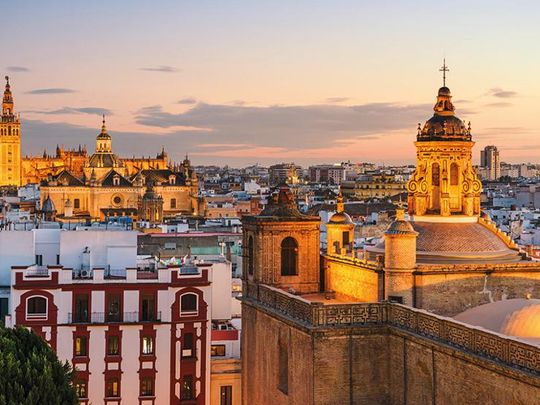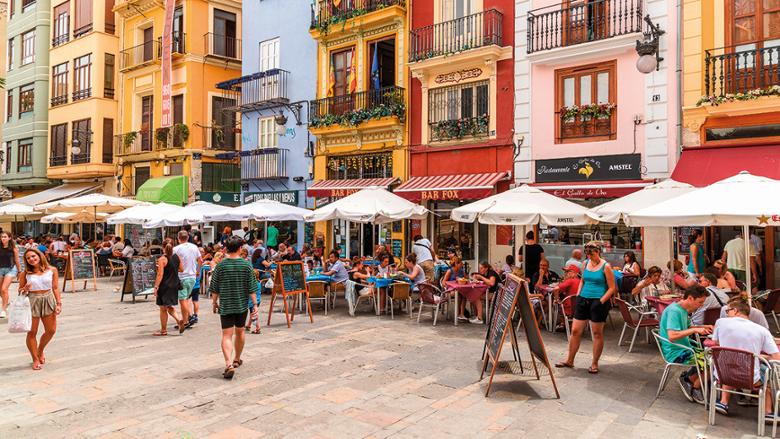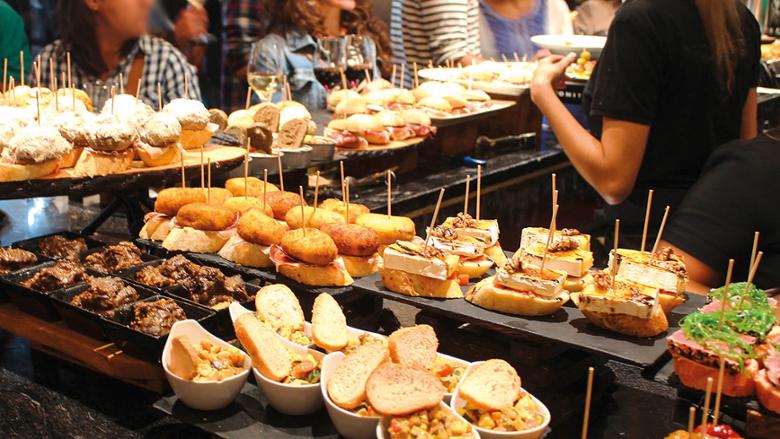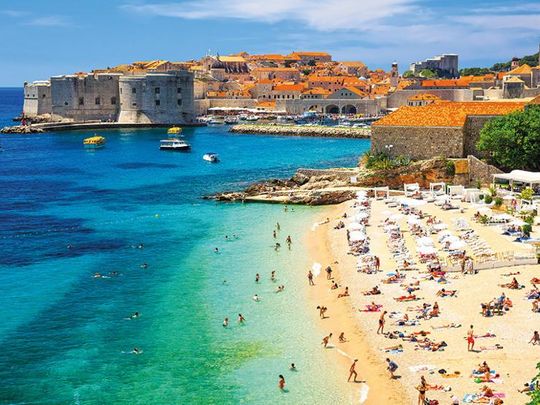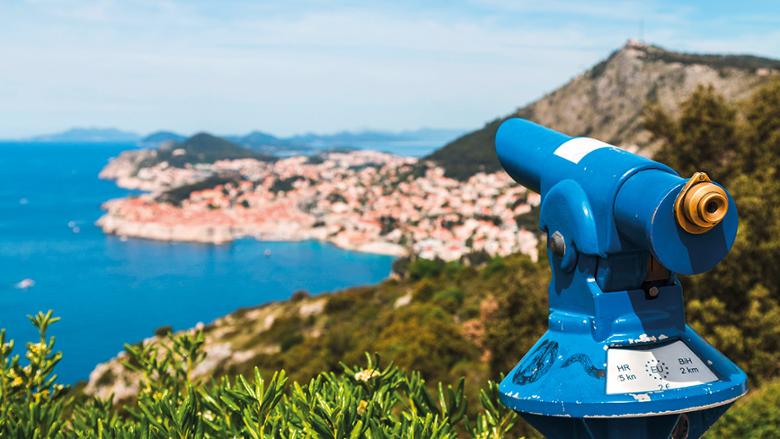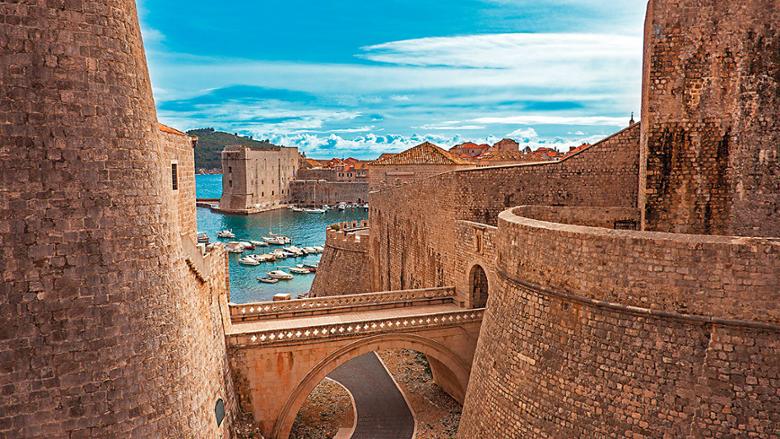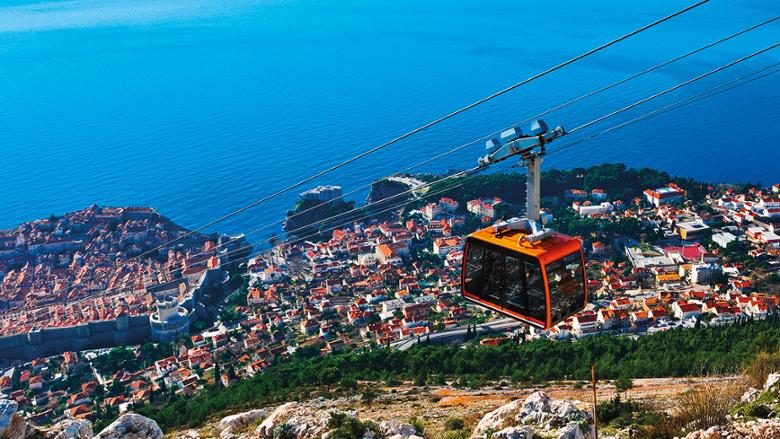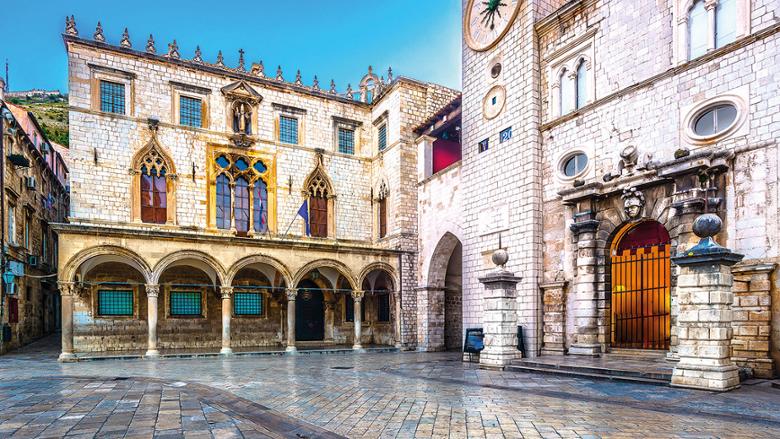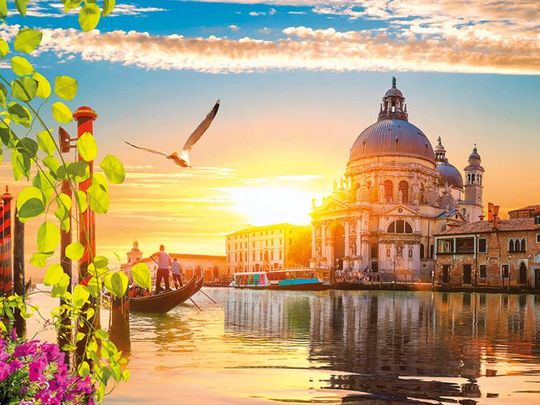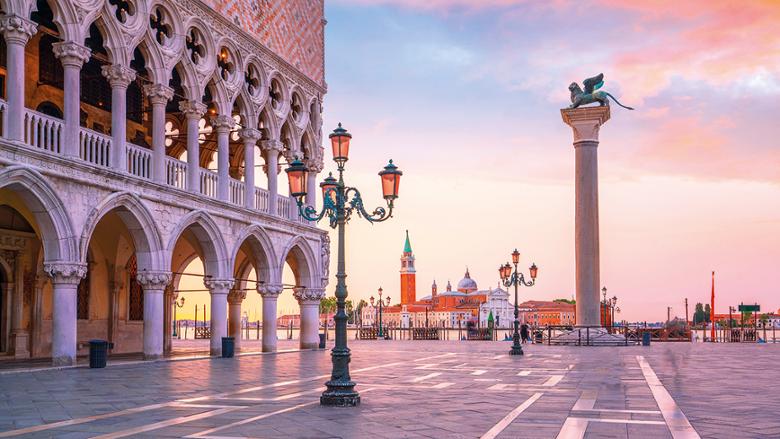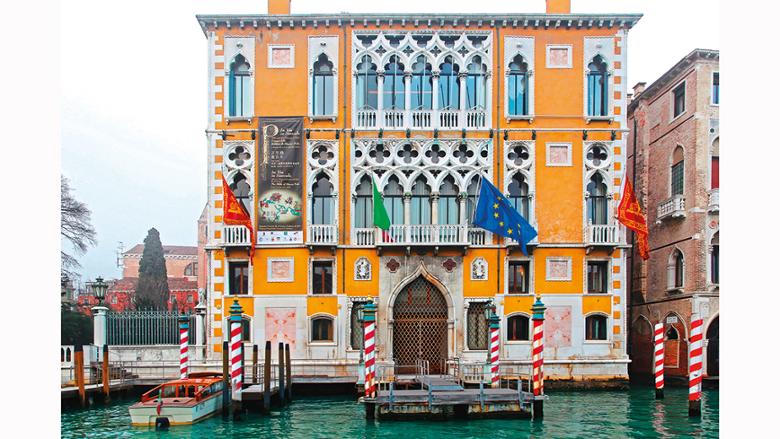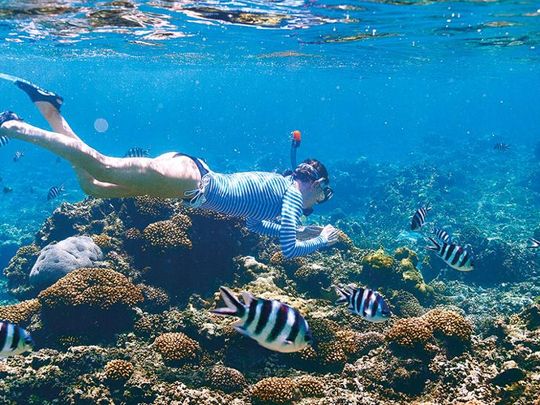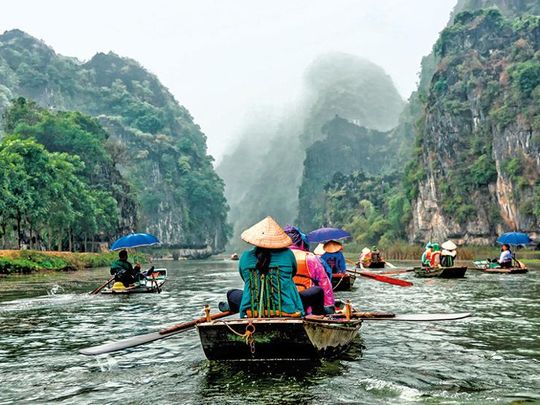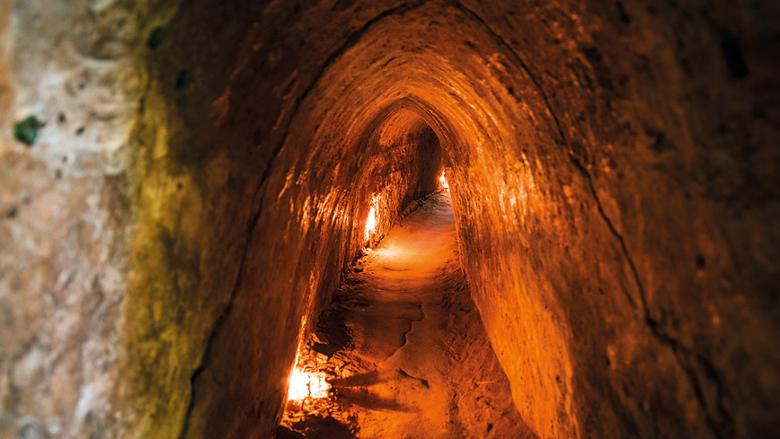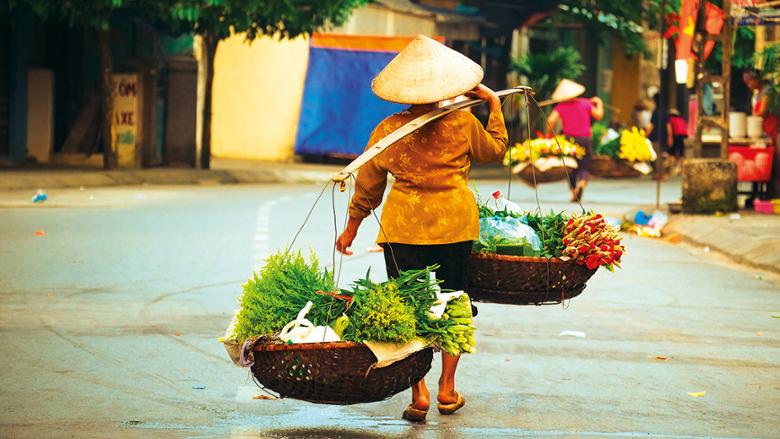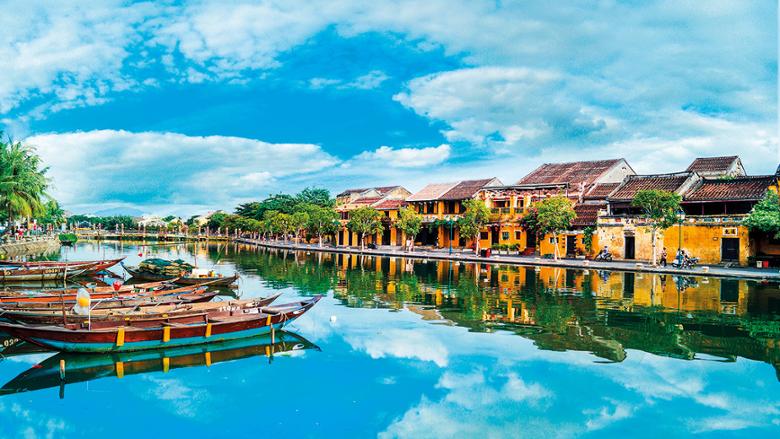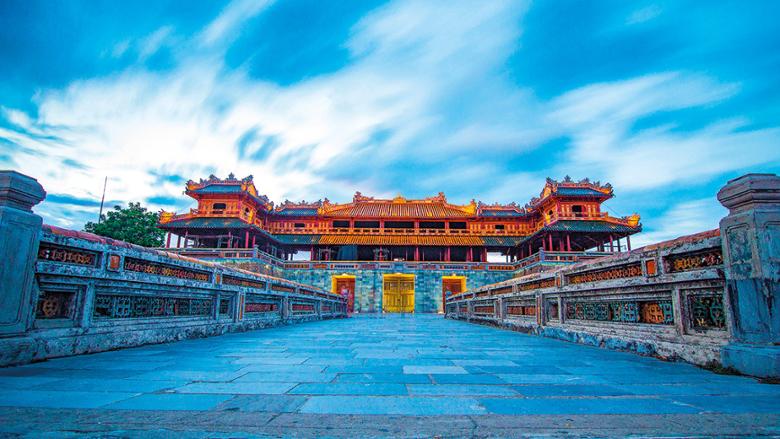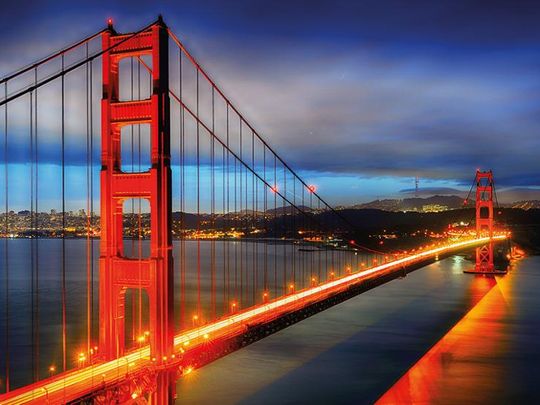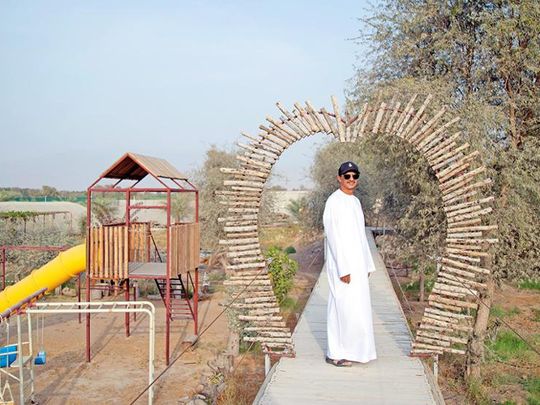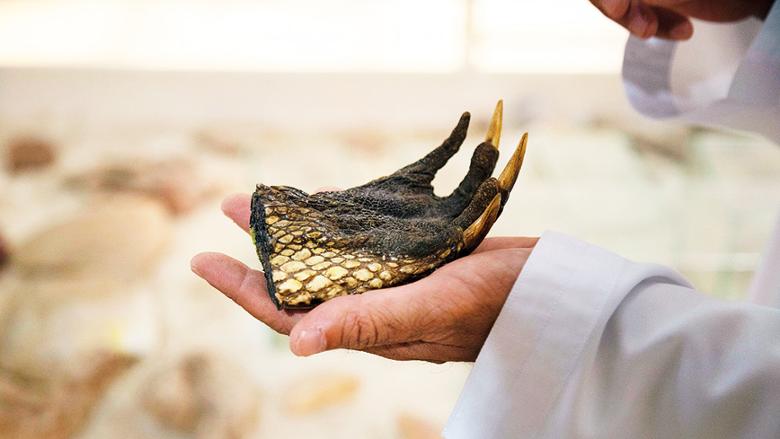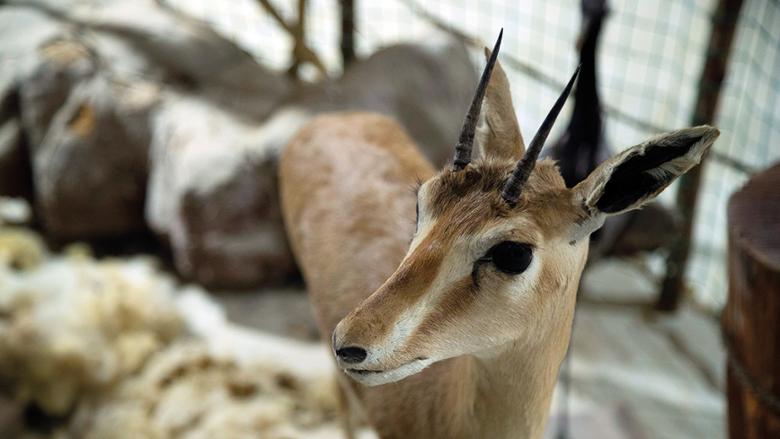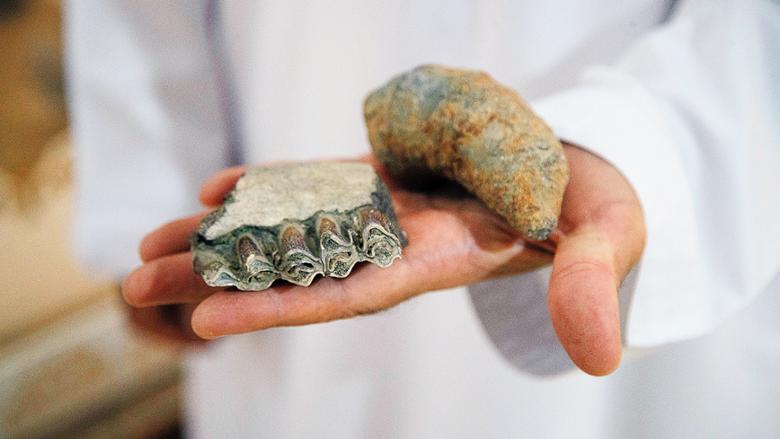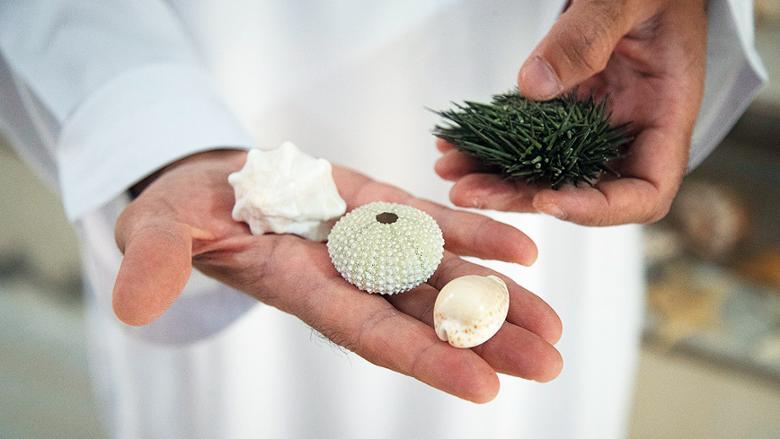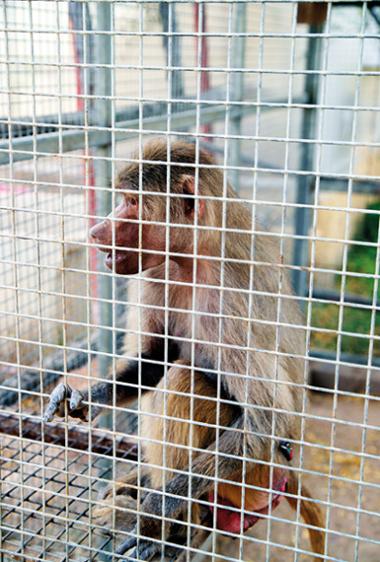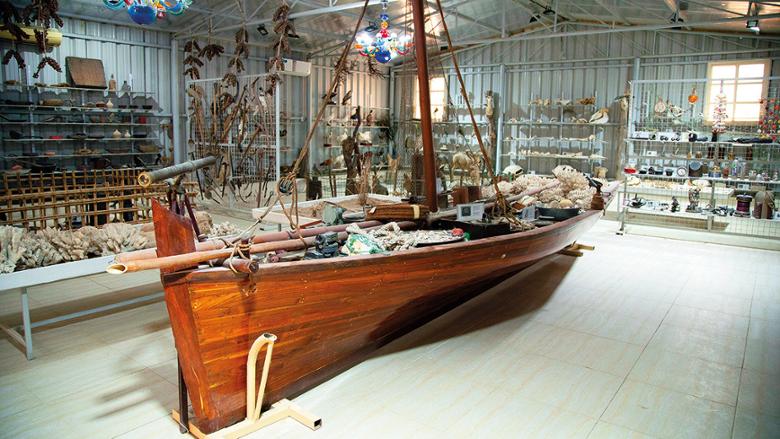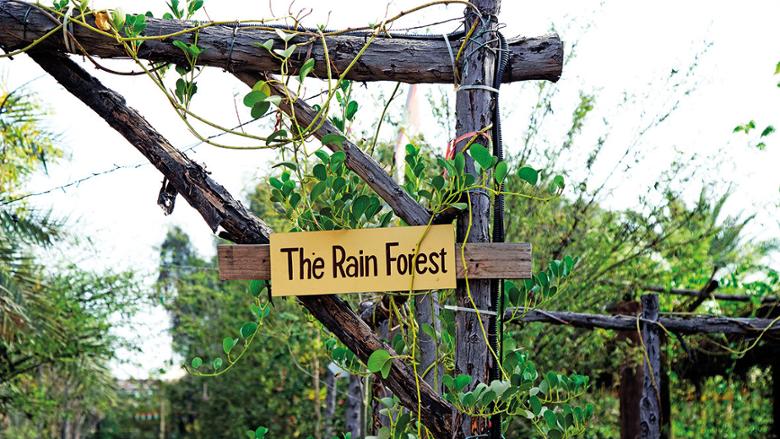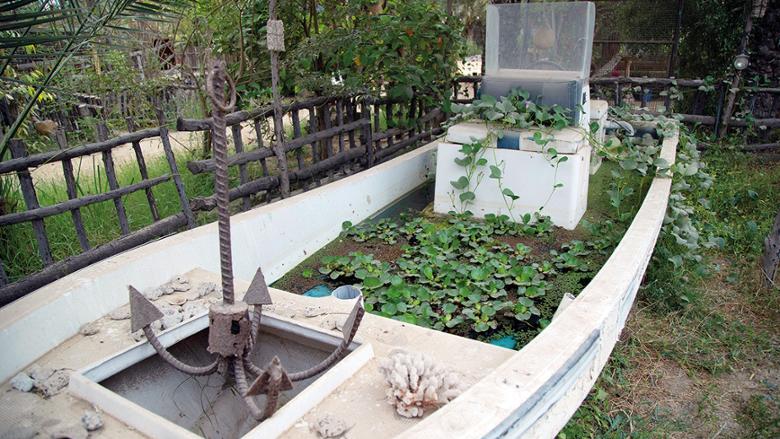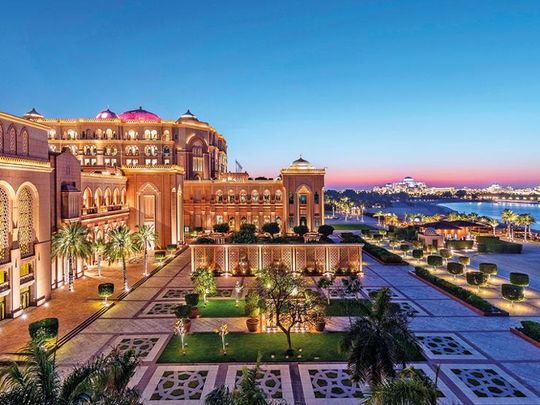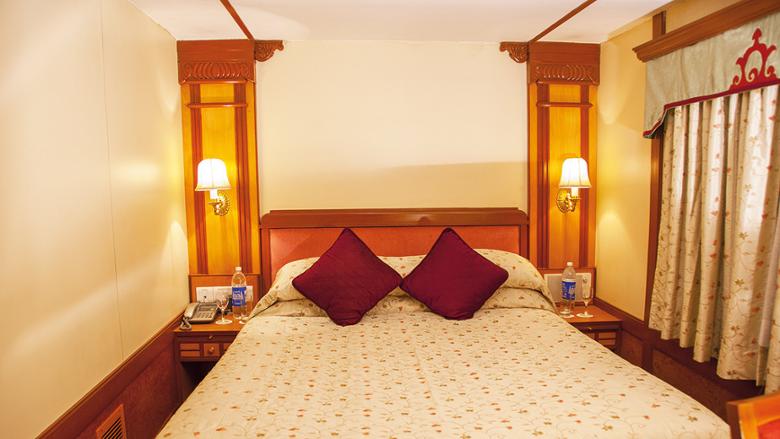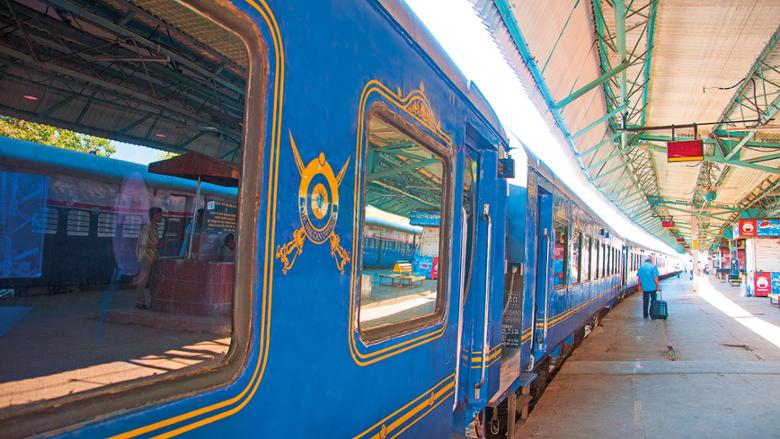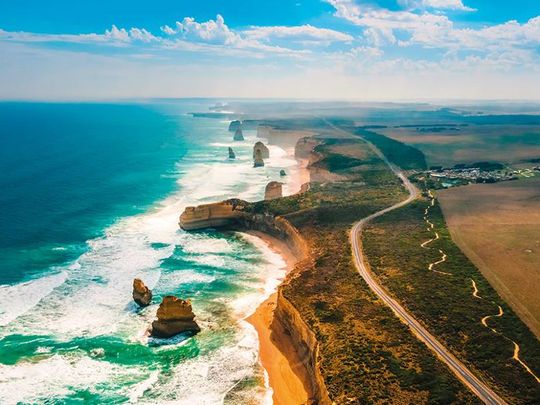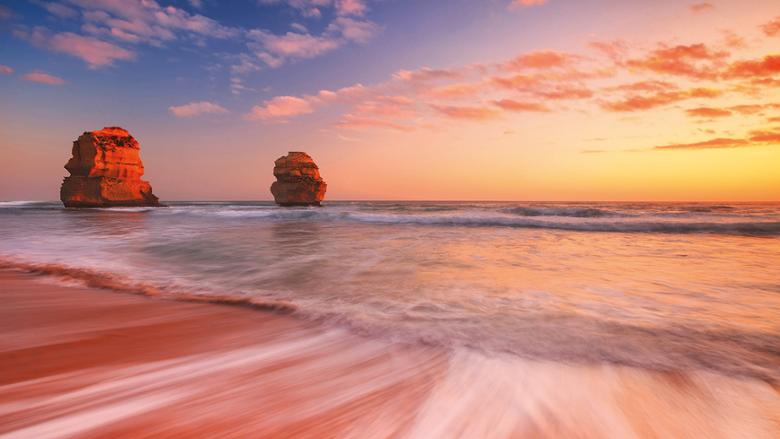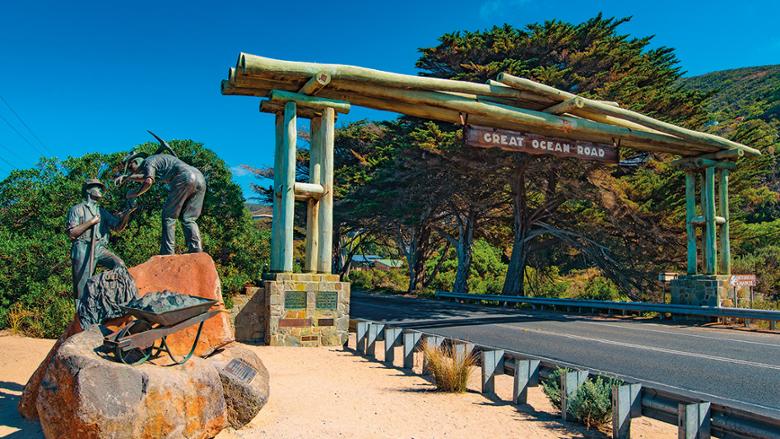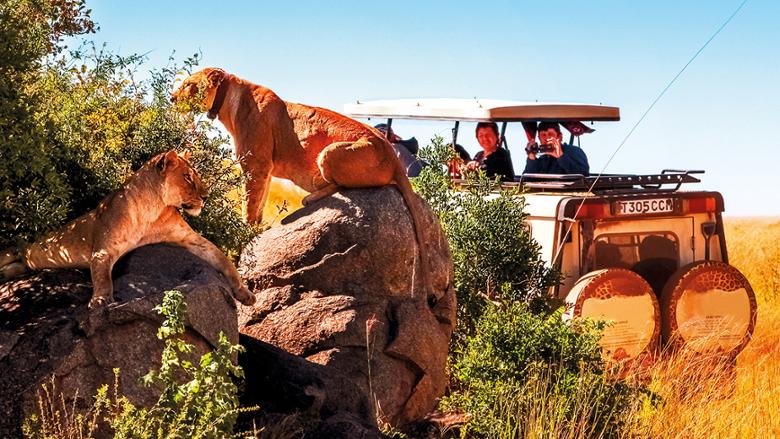Street food tours have become an increasingly trendy part of the travel experience. In India, stalls offer spicy selections of savoury snacks; in Vietnam you can slurp steaming bowls of pho soup and noodles on plastic stools in every backstreet. Closer to home, however, finding authentic regional cuisine usually requires booking a restaurant table, removing a large degree of spontaneity. The exception is Spain, where tapas culture comes with the same casual street-food style.
I’ve sampled wonderful cuisine in every corner of the world, but a trip around the historic Moorish towns and “pueblos blancos” of Andalucia, punctuated with the delicious food and colourful snapshots of day-to-day life found in any neighbourhood tasca or tapas bar, is my ultimate culinary holiday.
Tapas can be as simple as a plate of manchego cheese and olives, wafer thin slices of cured smoky and spicy Iberico hams served on olive oil soaked bread, a scoop of paella or deep fried crunchy anchovies. They can also be as complex as sizzling earthenware casseroles of stuffed squid, clams or chickpeas with spinach (garbanzos con espinacas). They are always made in-house and presented in mouth-watering displays. The complementary tapas or pinchos provided with your drink are usually moreish salty snacks served to encourage more drinking; the more sophisticated larger tapas dishes known as racions are added to your bill and refreshingly good value.
In Seville, home of the magnificent Alcazar palace, there is no shortage of tapas bars sporting attractive, locally-made ceramic tiles in the former Gypsy quarter, Triana. Make a pilgrimage to Bar El Riconcillo on Gerona that claims to have invented the concept of tapas, then head up to Carmona on a spur of the Alcores Hills, above the city, for stunning views at sunset and evening tapas in Plaza San Pedro.
Tapas in Jerez de la Frontier are accompanied by chilled glasses of delicate dry fino; Bar Juanito off, Plaza del Arenal, has a menu of 52, and artichokes are among its specialties.
Down on the Atlantic coast in Cadiz, wall-to-wall tapas bars specialising in super fresh seafood line C Zorilla; try La Gaditana for the best selection at excellent value.
Inland, past the stunning white village of Arcos de la Frontera, Ronda sits dramatically astride the deep El Tajo Gorge in the Serrania de Ronda mountains. Plaza del Socorro is packed with tapas bars; El Lechuguita at Remedios 35 is famous for its fried calamari and vegetarian options.
After touring the mesmerising multi-arched interior of Cordoba’s Byzantine La Mezquita mosque, order the wonderful salmorejo cold soup with boiled egg or the pesto vegetables with fried egg at Taberna San Miguel in Plaza San Miguel.
Your final stop is Granada, high in the Sierra Nevada mountains and home of the mighty Alhambra palace. Los Diamantes at 28 Navas serves superlative gammas al ajillo (garlic shrimps), and pulpo gallego (spicy octopus). Reina Monica at 20 Panaderos offers complimentary Arabic tapas (three with each drink), and serves a generous tapas buffet of Andalucia’s finest culinary treats.
How to do it
Pura Aventura (pura-aventura.com) offers an 11-day self-drive tour of Andalucia, from Seville to Granada, with 10 nights’ accommodation in boutique hotels and B&Bs. A half-day private tapas tour of Seville, guided historic tours of the Alcazar and the Alhambra, a flamenco show and several lunches and dinners are included in the price.
The Daily Telegraph
Read more
- Best places to get married in the world
- Dreaming of Dubrovnik and the Game of Thrones fever
- Cruising in Venice: The stuff of dreams
Scenic weddings
1. Castle Weddings in France
Every princess deserves her castle. The elegant châteaux in France with their exquisite architecture and captivating history are perfect to make your special day a royal extravaganza. These venues also offer all-inclusive packages – accommodation, food, drink, music, and photography to make your special day the grand occasion that it is. The best part? These chateaux are big enough to accommodate the entire wedding party, so no one misses out on the fun and royal treatment!
Options:
A. Château De Challain is situated in the little village of Challain-la-Potherie in France. The palace is located one hour away from Nantes Atlantique International Airport.
Their all-inclusive packages begin from around €6,900 (Dh30,000). To accommodate different needs, the Château Challain boasts of 72-acres of gardens and a chapel too. Fireworks, acrobats, and magic shows are just a few of the entertainments that one can expect to hire if the melody of the harp is not enough.
Challain-la-Potherie is a quaint scenic village situated near the scenic Loire River Valley. Its Gothic Revival Era architecture buildings leave the village with unique buildings for photoshoots. Famously known for its wine, Challain-la-Potherie also has many vineyards and orchards for a soothing, romantic stroll.
Check out: Once done exploring the château, also visit the Loire River Valley for some scenic views. Explore the many vineyards and Orchards and embrace the country experience. Architecture enthusiasts may especially appreciate this Challain-la-Potherie, for it is filled with monuments from the Gothic architecture revival era, like the Windmill-Le Moulin du Rat built from 1796 to 1827. There is also the Cours Des Aulnays or fortified manor of the Court of Aulnays built in the 16th Century, which is just 300 metres away from the Camino De Santiago, or ‘Pilgrims Way’.
B. Chateau Du Grand-Luce: Named in tribute to the Age of Enlightenment (‘Grand Luce’) Chateau Du Grand-Luce is the hidden gem in the Loire River Valley, South of Paris. It is about one hour away from Tours Val de Loire International Airport.
The only building to have survived the French revolution, it has hosted many great thinkers like Voltaire, Rousseau, and Diderot; and many precious Louvre artifacts during WWII.
With packages starting from €5,000 (Dh20,000), the Château’s 17 unique rooms and suites provide the couple and their guests with accommodation, and access to their gardens, grounds, spas, pool, Orangerie, and ballroom.
The Loire River Valley looks straight out of a storybook. This UNESCO World Heritage site is a perfect spot for romantic escapes. Relax in the many gardens and fruit orchards that line the rivers of the ‘Garden of France.’ Tour the area to explore the 300+ chateaux, each with its own unique history and style.
Also check out: The château also boasts two hair salons, and three bakeries to indulge your sweet tooth. Explore the Sancerre vineyards for picnics and wine tastings. Go biking through the Bercé forest and fields, or antiquing in La Chartre-sur-le-Loir. Soak in the beaches of Normandy, have a cultural experience at the historic town of Amboise (Leonardo Da Vinci’s residence), and of course, you can always run away to the city of love – Paris, which is 55 minutes by train.
What to keep in mind:
• The law requires at least one of the partners to reside in the town of the venue for a minimum of 40 days prior to the wedding, (Those who own land in France are exempt from this rule.)
• High seasons are during holidays and April to October – although the weather is beautiful for outdoor weddings throughout the year, indoor weddings are just as beautiful because it is, after all, a picture-perfect palace!
2. Evergreen English Weddings
Plant parents looking to say “I do” in a venue filled with foliage? Gardens and courtyard weddings are the way to go.
A. Helmingham Hall Gardens: One hour away from Norwich Airport, Helmingham Hall Gardens is an attraction for those who want a traditional countryside wedding.
With packages starting at €650, get ready to have an exclusive wedding, as Helmingham Gardens hosts only a limited number of weddings every year.
Situated on the east coast of England, Suffolk county is home to many castles at Framlingham and Orford, and pretty medieval towns. You can discover places by cycle, or on a leisurely walk. Suffolk also has scenic coastal areas, perfect for those wanting to spend time by the beach.
As Helmingham Gardens does not offer accommodation, the Hillbrow Farm Bed and Breakfast, and The Railway Inn Westerfield are two hotels nearby.
Also check out: Thirty minutes away from Helmingham is Stowmarket – a great place for river walks. There is also the Museum of East Anglian Life – a tribute to Suffolk’s agricultural past. Something more trendy is the John Peel Centre, a creative arts destination. Further away, there is Needham Market. Great for walkers and cyclists.
B. The Talhenbont Hall Estate is a small family business located in the Llyn Peninsula in North Wales. Two hours away from Manchester International Airport, this cosy but elegant estate is perfect for an intimate wedding away from the city.
Packages for this 16th-century estate overlooking the River Dwyfach start at €4,000. Talhenbont also has self-catering accommodation in cottages for up to 42 guests, making it the perfect setting for a small wedding.
The Llyn Peninsula has plenty of scenic routes for hiking or camping. Studded with coves, churches, beaches, and even forts, there is much to enjoy. The region is also a drive away from the delightful Snowdonia mountains – perfect for a hike and/or a picnic.
Also check out: Two miles away is the stunning beach town of Criccieth. Hafan Pwllheli has access to the waters of Anglesey and Cardigan Bay. For golfers, the Pwllheli Golf Club offers a course with fabulous views of Cardigan Bay.
For a cultural experience, visit Neuadd Dwyfor, a local arts centre with touring productions, and Oriel Plas Glyn-Y-Weddw Arts Centre has changing exhibitions and a lovely tea-room.
What to keep in mind:
• If both you and your partner are not from the UK, outside the European Economic Area (EEA) or Switzerland, you need to apply for a marriage visitor visa which is valid for up to 6 months.
3. Library Weddings in the USA
Start a new chapter in your life in company of your fictional and nonfictional friends. As cheesy as that might sound, these heritage libraries will definitely wow the bookworm in you.
A. George Peabody Library in Baltimore: Say “I do” with over 300,000 volumes of books as witness at this century-old library. Barely 20 minutes away from Baltimore/Washington International Airport by car, it is also accessible by a ‘Super Shuttle’ service, the Light Rail, MARC, and Amtrak trains.
The George Peabody Library is a very unique venue for your wedding. There is really no need to spend on decorations, the Reading Room has beautiful fairy light rows hanging atop to bring the whole room to life, along with grand pillars of white and gold that will surround your venue on the day. Prices start from $5000.
The biggest bonus? The event collections also help support the library’s collections, so this is a win for everyone!
For accommodation check out the numerous hotels such as Hotel Indigo Baltimore Downtown, an IHG Hotel, Hotel Revival Baltimore and Radisson Hotel Baltimore Downtown-Inner Harbour.
Also check out: Baltimore’s Washington Monument which came before the Washington Monument we know today in Washington D.C. (which is nearby!), Literary enthusiasts can visit the home of writer and poet Edgar Allan Poe’s footsteps, visiting his home, grave, statue, favourite pub, and more. Try out the Baltimore Water Taxi or appreciate the ever-changing graffiti in Grafitti Alley behind the Motor House Creative Incubator.
B. Boston Public Library: Founded in 1848, the Boston Public Library is just 15 minutes away from Boston Logan International Airport. Boston is perfect for those who love city life. Don’t forget to enjoy the sights of the Prudential Center and John Hancock Tower – highlights of the beautiful skyline. Boston thrives on the arts, music, and theatre. Explore the many parks that constitute Boston’s priced ‘Emerald Necklace’, or embark on a 15-minute Swan boat cruise.
Choose from the various areas in this spacious library, or shift the wedding outside to the courtyard with a beautiful fountain. Prices start from $4,400. The Fairmont Copley Hotel is within walking distance from the Library. There is also Hilton Hotel, Westin Hotel, Four Seasons Hotel Boston on Boylston Street.
Also check out: Trendy boutiques in Newbury Street or a pleasant stroll along Commonwealth Avenue. Go kayaking in Charles River, or have a relaxing time by the water.
What to keep in mind: Marriage in the US requires a marriage license.
Adventure weddings
1. Safari Wedding in South Africa
The southernmost country in the African continent, South Africa boasts of varied topography, and cultural diversity. It is especially famous for its safaris, of which there are plenty. Take your vows around the majestic animals with an unconventional Safari wedding, making it an unforgettable experience.
A. Sabi Sabi Private Game Reserve is home to over 200 animal species, including the Big 5, cheetahs and wild dogs. Look up at the sky as you listen to the local choir on your wedding day and be sure to spot exotic birds, since almost 5 per cent of the world’s bird species have nested in this region.
The reserve is set in the Southern section of the Kruger National Park in Mpumalanga. Kruger National Park has a high density of wild animals. Mountains, bush plains, and tropical landscapes are all a part of this region.
A wedding here can be a magical affair during sunset near the watering hole, or in any of their unique lodges. Sabi Sabi is a one-hour flight from O.R. Tambo International Airport (Johannesburg) directly to the Sabi Sabi airstrip. Alternatively, one can fly via Skukuza Airport, Kruger Mpumalanga International Airport (Nelspruit), or drive down in a scenic five-hour chauffeured or self-drive from Johannesburg. Wedding packages from ZAR17,000.
B. The Sanctuary Makanyane Safari Lodge: All 4,450 acres of this stunning property is happy to fulfil your safari wedding wishes. Exchange your promises of love underneath the ancient Tamboti tree, on the Marico Riverbank, or even overlooking a water hole. Walk down the aisle holding a unique bouquet of local, seasonal flowers, after unwinding with their pampering treatments to help you destress.
The Madikwe Game Reserve is home to the hard-to-spot wild dog, a species that is currently on the brink of extinction. There are also the big 5 animals, along with giraffes, cheetahs, and spotted and brown hyenas. From ZAR40,000.
What to keep in mind:
• Spring (September to November) and Summer (December to February) is when the bush is lush and thick at this time the reserve has many new-born animals.
• Autumn (March to May) and Winter (June to August) is when the water is less, and the bush is dry. Animals frequent the water holes more often.
• It is recommended that guests consult their physician/travel clinic regarding easily administered malaria prophylaxis before embarking on any safari travel to South Africa.
2. Under the Sea in the Maldives
If the calming sound of the waves, the azure water and white sand is what you want for your wedding venue, then the underwater matrimonies in the Maldives are the perfect venues for you.
A. Anantara Kihavah: Situated on the Baa Atoll in a UNESCO Biosphere Reserve, this white sand island is also considered the World’s most instagrammable hotel. There are 80 beach and over-water pool villas and residences, along with the Maldives only over-water observatory.
Go for a relaxing stroll or bike your way around the island, or take a cruise to explore the oceans. Choose from the many restaurants on the island or better yet, have an underwater dining experience where you can explore the world’s first underwater wine cellar. Go stargazing, or let the stars watch a film with you!
Just 35 minutes away by seaplane from Male International Airport. Anantara Kihavah, packages start at Dh33,486 and include a Coral adoption program along with the exchange of rings and signing of the wedding certificate.
Also check out: Snorkelling, parasailing, and kayaking are some of the water sports on the island. You can also go fishing and island hopping. Try Slumber Guru for the perfect end to your night. Marine enthusiasts can try out Dolphin Discovery and Turtle Quest. Additionally, you can also visit Hanifaru Bay nearby, where Manta Rays congregate during May-November to feed on plankton.
B. The Residence Maldives is yet another beautiful island for an underwater wedding. Surrounded by the wonders of the Indian Ocean, it is located in the southern Maldives in the Gaafu Alifu Atoll, also known as the Northern Huvadhoo Atoll.
Home to abundant marine life, it is a natural sanctuary for dolphins, reef sharks, octopuses, and turtles.
Complete with a spa, infinity pool and a Dive centre, guests can participate in a variety of water sports, or just unwind. Packages for an underwater wedding begin at $2000 and include planting a coconut palm ceremony, and Maldivian Bodu Beru drummers to escort you down the aisle.
Also check out: The resort’s snorkelling safari to take in the colourful array of fish, or sign up for a Maldivian cooking class for a gastronomic adventure.
Keep in mind:
• Marriage in the Maldives is not legally binding, which means another ceremony before or after your ceremonial wedding in the Maldives is mandatory.
• Purchase coral reef-friendly sunblock only!
3. Break the Ice in Alaska
Experience the warmth of your love atop one of the 100,000 graceful and cold Alaskan glaciers. The perfect adventure wedding to ensure that your special day will indeed be the ice-breaking conversation amongst your friends and family.
A. Alaska Weddings: Based in the capital city of Juneau, Alaska Weddings have been offering Helicopter Glacier Weddings since 2003. Proclaim your love at heights of 1800 feet to 3500 feet. Board the thrilling A star helicopter ride that allows you to take in the beautiful sights of Alaska, moments before you touch down into your wedding venue – almost 3500 feet of snow with a breath-taking backdrop to seal your love for eternity.
Once you arrive at Juneau International Airport, the glaciers are just a few minutes away. With packages starting from $2500, Alaska Weddings will provide you with special boots to help walk on ice, along with a drink to pop open high up as a married couple. Based on your package, you can land on the easily accessible Mendenhall Glacier or the more secluded Herbert Glacier, and if you fall in love with the place, you can extend your time here.
Juneau is a mountain town and coastal community too. Originally called Dzantik’i Héeni or “Base of the Flounder’s River”, it was used as a Native fishing ground for thousands of years before being developed into the city it is today. Apart from viewing the majestic glaciers, Juneau has plenty to do. Enjoy great seafood, or fish for your own! Be a part of Juneau’s thriving arts and culture scene and try out the many outdoor activities they conduct.
Juneau has plenty of hotels and B&Bs, and Alaska weddings will be happy to provide transportation to and from.
Also check out: If you haven’t had your fill of glaciers, there are enough and more around the area to explore. Glaciers also offer opportunities to go dog sledding or hiking. Make sure you find their Events Calendar to personalize your own fun time.
B. Knik River Lodge: Your experience with Alaska helicopter tours begins with the Knik River Lodge. One scenic flight away is the Knik River Valley, where the awe-inspiring Knik Glacier awaits. Since all their pilots are ordained, you can also opt for them to officiate your wedding.
An hour away from the Ted Stevens Anchorage International, choose from their packages starting at $650 per person for one hour and one landing to create the perfect adventure wedding, complete with rich chocolate-coated juicy strawberries to celebrate your love on top of the world!
The gorgeous Knik glacier is a secluded spot with no road access. Located in the Chugach Mountains, it is one of the largest glaciers in Southcentral Alaska. Sci-fi fans may also recognize the Knik glacier from its appearance in Star Trek VI. Around here is also scenic Lake George, across which one can spot Colony and Cataract Glacier. On your thrilling flight lookout for bears, moose, and Dall sheep.
The small town of Palmer is known as Alaska’s Agricultural hub. It is known for its many local events, such as the open-air market called ‘Friday Fling.’ Palmer has numerous hiking trails, and during winters don’t miss the Snow Safari.
Also check out: Apart from glacier helicopter tours, one may also choose to explore the glacier while fat-tire biking, glacier dog sledding, or through glacier treks, there is also a jet boat tour just down the road. Go on a farm tour to discover the Matanuska Susitna Valley and their world record-sized cabbages. There is also a Reindeer and Musk Ox Farm in Palmer – a 20-minute drive from the lodge.
What to keep in mind:
• The Alaskan high season runs from late May to early September. July being the peak period.
• Winter weddings are less popular for the extreme temperature, but it also provides beautiful snowy backdrops for your wedding photos.
• It is important to bring your own marriage license.
Straight From the Screen Weddings
Let’s face it, the most beautiful weddings we’ve seen are on screen, and more often than not, we base our weddings off of them! So why not look up some beautiful venues where these heart-piercing, tear-jerking scenes actually occurred? From the reel, for you, in real.
1. Mahabalipuram, Tamil Nadu, India (2 States)
Although Krish (Arjun Kapoor) and Ananya (Alia Bhatt) may have been star-crossed lovers staring into each other’s eyes in the wedding scene of the Bollywood movie 2 States, your eyes are bound to slip away into the backdrop for a moment at least.
Overlooking the Bay of Bengal is The Shore Temple in Tamil Nadu’s Mahabalipuram. Since 1984, it has been a UNESCO World Heritage Site. If not in the temple, Mahabalipuram’s clean beaches and luxury resorts allow for a beautiful beach wedding in the state of heritage and history.
One hour away from Chennai International Airport, The Shore Temple was artfully crafted with granite dating from the 8th Century AD. It is one of the oldest temples in South India. Filled with magnificent sculptures, the temple is proof of the architectural prowess of the region.
Mahabalipuram is located just an hour away from the State’s capital, Chennai. Rooted in culture, the Indian Dance Festival dedicated to the artful dance forms of India showcased here during the month of December is a sight to behold. Enjoy its pristine beaches and local cuisine, and feel right at home with the hospitality.
A. Radisson Blu Resort Temple Bay offers a luxury ballroom or a pretty outdoor wedding with the Bay of Bengal backdrop. They also offer personalized catering. Prices are available on request and vary according to the number of guests, meal options, and rooms.
B. Ideal Beach Resort also offers a grand hall for an indoor wedding or a well-maintained lawn with a view of the Bay of Bengal for an outdoor wedding. They have beautiful rooms and suites to retire into at the end of a joyful day. Their prices are available on request and vary according to the number of guests, meal options, and rooms.
Also check out: Dakshina Chitra Heritage Museum is a museum of art, architecture, lifestyle, and craft, making it a must-visit. There are many historical monuments and caves for archaeology enthusiasts. Most importantly, don’t leave until you’ve eaten at least one meal on a banana leaf.
What to keep in mind:
• The best time to be married here is between November to March, although you may find surprise visits from the rain.
• If you wish to be married in the Shore Temple itself, you have to obtain special permission from the Archaeological Survey of India for a traditional South Indian wedding.
2. Niagara Falls, USA/ Canada – The Office
Although released back in 2009, every time you watch the two-part episode ‘Niagara’ from the sixth season of The Office, there will be tears. After a wait that seemed too long, Jim (John Krasinski) finally unites with his soul mate, Pam (Jenna Fischer). The scene creates a deep desire to unite with your beloved upon the magical Maid of the Mist boat ride too, with the overpowering Niagara Falls as your witness. This is a perfect destination for a simple elopement wedding – just like the Halpert’s!
Being right on the USA and Canada border, you can choose which side you wish to marry from, though Jim and Pam got married from the USA side. The 30-minute ride takes you as close as possible to this magnificent waterfall, allowing you to experience its beauty, and absorb its mystical power as you say ‘I Do!’
No matter how hot the weather is, be assured that the ‘Honeymoon Capital of the World’ will keep you cool throughout your wedding thanks to the force of the falls. Board the Maid of the Mist (USA) or the Niagara City Cruise (Canada) and declare your love with a beautiful rainbow overhead.
A. A 16-minute drive away from the Niagara Falls International Airport (IAG) the Hilton Niagara Falls/ Fallsview Hotel & Suites in Canada have packages beginning at Dh1,000 (500 CAD).
B. If you wish to stick to The Office venues, 30 minutes away from Buffalo Niagara International
Airport lookout for the Red Coach Inn, where the hotel scenes were shot. Although the Inn has undergone a major remodel now, you can still find the rooms intact, along with the Honeymoon Suite. Their packages start at Dh500 ($125).
Also check out: The Skylon Tower Revolving Restaurant in Canada, where you can share a romantic meal overlooking the falls. Witness over 2000 butterflies at the Butterfly Conservatory, and go on the White Water Walk to explore more of the Niagara gorge.
What to keep in mind:
• The Maid of the Mist runs from early April to October, based on the ice conditions in the river.
• You cannot have a private ceremony as the Maid of the Mist does not allow reservations.
• Not all captains can officiate the ceremony, so do bring a licensed wedding official.
• Marriage in the US side requires a license from the New York State, and Marriage in the Canada side requires a license from Ontario.
3. Savoca, Italy – The Godfather
Although the film was set in the Sicilian town of Corleone, director Francis Ford Coppola actually decided to shoot the film in the more rural areas of Sicily because Corleone had been too modernized by then.
And so we find the quaint little village – Savoca, where a beautiful wedding takes place between Michael Corleone (Al Pacino) and the beautiful Sicilian woman he falls in love with – Apollonia Vitelli (Simonetta Stefanelli). Right after their wedding at the church of San Nicolò, the couple can be seen walking through the village following a band playing the Sicilian Tarantella, which can be made possible for your special day too!
A medieval hilltop village on the Ionian Coast in Sicily, Savoca is at around 300 metres above sea level. One of Italy’s most beautiful villages and is simply perfect for a quaint, classic wedding between partners who share a love for The Godfather, the rustic charm of Italy, and each other! Filled with lush vegetation- citrus groves, olive groves, and vineyards- good food is a guarantee. Walk beside your loved one beneath the clear blue skies, this village with a great view will be a treat to explore on foot.
A. Resort Borgo San Rocca: An hour away from Catania-Fontanarossa Airport, the Resort Borgo San Rocca is a great place to stay, just a 10-minute walk away from the centre. They also have a bridal suite, and a luxurious venue to conduct a wedding. Prices are available on request and vary from room to season.
B. Luxury Wedding Sicily can make your ‘Godfather Wedding’ dream come true. All their packages help you choose a venue, hire a celebrant, along with photography, music, and a wedding planner. Packages start from Dh30,000 (€6,700).
Also check out: Fans of The Godfather may be familiar with Bar Vitelli where the couple first falls in love. Bar Vitell is in Palazzo Trimarchi, an 18th-century palace built in the Sicilian Neoclassical style. Close by, there is also a square that allows for a great view of the village. Here is a steel sculpture of Francis Ford Coppola, created by artist Nino Ucchino. Don’t forget to put coins into the Talking Donkey sculpture right beside for some hilarious Donkey noises. There are many more historic monuments and churches to explore in Savoca.
What to keep in mind:
• Late April/May is Springtime, you will be surrounded by flowers and clear blue skies. July and August tend to be very hot, and October and November are perfect for romantic vineyard retreats.
• While there are not many legal procedures in Italy, making it a stress-free destination, rules may vary for each nationality.
Read more
- Demi Moore: Ageless beauty at 59
- Why this Dubai couple sold everything to live a nomadic ‘van life’
- Original supermodel Claudia Schiffer’s beauty secrets at 50
1. Walk the city walls
It’s an obvious place to start, but you’d kick yourself if you missed the chance to walk the 1.75 mile-long medieval and Renaissance walls that encircle the Old Town. Get captivating glimpses of Dubrovnik daily life – tiny gardens, rooftop terraces, school playgrounds – as well as its sturdy stone towers and mesmerising views of the Adriatic.
The details: wallsofdubrovnik.com
2. Visit the Red History Museum
Mixing an element of kitsch with deadly seriousness about the reality of life in Tito’s Yugoslavia, the Red History Museum takes you on an interactive journey through the decades from 1945 to the 1980s, when Yugoslavia began to fall apart. It’s entertaining and thought-provoking, and the adjoining café and cultural space show how the neighbourhood of Gruz has become Dubrovnik’s trendiest in the past few years.
The details: redhistorymuseum.com.
3. Take a hike to Park Orsula
You’ll get some of the best views of Dubrovnik from this clifftop park south of the Old Town. Hugging the hillside is an atmospheric stone amphitheatre, where summertime concerts take place from around the middle of June to the end of August. Time your hike – about 40 minutes from the Ploce Gate – for sunset and the vistas will be quite extraordinary.
4. Go to the beach
You don’t have to walk far to dive into the clear blue waters of the Adriatic. Just south of the Old Town is Banje beach, with fabulous views of the city walls and a restaurant and DJ sets if you want to join the night-time party. It’s quieter further south at Sveti Jakob beach (worth the 20-minute) hike, or hire a kayak from Sulić beach just beyond Pile Gate near Fort Lovrijenac. Strike out further north for the family-friendly Lapad Beach and the beaches along the Babin Kuk peninsula. Dubrovnik’s beaches are pebbly, so you might want to bring swimming shoes.
5. Get lost in the Old Town
Dubrovnik’s Unesco-listed Old Town is a marvel of marble car-free streets, narrow lanes and stepped alleyways blended with handsome Renaissance and baroque palaces. Stradun, the marble main thoroughfare, qualifies as one of the world’s most dazzling high streets, topped and tailed by the 14th-century Franciscan monastery and the 16th-century Sponza Palace. Catch a classical concert in the 15th-century gothic-Renaissance Rector’s Palace during the summertime Dubrovnik Festival, or visit the palace’s fascinating Cultural History Museum.
The details: dumus.hr.
6. Ride the Dubrovnik Cable Car
It’s hard to beat the views of Dubrovnik when you ride the cable car 405m to the top of Mount Srd. It takes only four minutes – and you’re very welcome to hike up the zigzagging path for about 50 minutes if you want to save the cash. However you reach the summit, you’ll have the Old Town’s terracotta rooftops to gaze upon, as well as the Adriatic coastline and surrounding mountains of the Dinaric Alps. Stop for a drink at the Panoramic restaurant before heading back down.
The details: dubrovnikcablecar.com, adult round trip from £22, one-way from £12.50.
7. Take a boat to Lokrum
This tiny island – less than a 15-minute boat ride from the Old Town’s port, and only about a mile long – is quite another world from the busy streets of Dubrovnik. Bring a picnic as you explore Lokrum’s Napoleonic fort, botanical garden, Benedictine monastery and pine-shaded paths past olive groves and the island’s resident peacocks. Have a swim in one of its rocky beaches or in the inland saltwater lagoon, and if you’re a Game of Thrones fan, you can sit in the actual Iron Throne used in the HBO series.
The details: lokrum.hr.
8. Go to market
If you’re staying in or near the Old Town, you’ll want to drop by the daily morning market in Gundulić Square beside the cathedral. But, just beside the ferry port at Gruž is Dubrovnik’s larger food market, with local fish, meat, fruit and veg – and in a handy spot to pick up picnic provisions if you’re taking a day trip to one of the nearby islands.
9. Visit War Photo Limited
This evocative, compelling gallery created by the New Zealander photojournalist Wade Goddard showcases the work of the world’s war photographers. It’s not just the conflicts in the former Yugoslavia that are displayed in this gallery just off the Stradun, but also of others in recent history.
The details: Warphotoltd.com
10. Go to Fort Lovrijenac
If you’ve bought a ticket for the city walls, you’ll automatically get free entrance into the hulking 14th-century Fort Lovrijenac, which stands guard over the Pile Gate. Climb its 165 steps to snap one of the most popular views of Dubrovnik’s Old Town, and come in the summer for its annual production of Hamlet.
The details: tzdubrovnik.hr
The Daily Telegraph
Read more
- Cruising in Venice: The stuff of dreams
- Escape to Seychelles
- Revisiting the timeless charm of Vietnam
Pick a tower – the campanile in St Mark’s Square will do, or the one on the island of San Giorgio Maggiore – and make your way to the top. To the east, thin strips of land protect the fragile lagoon from the waters of the Adriatic; to the north, the peaks of the Dolomites – snow-capped in winter, fading into heat haze in summer – heave into view. And at your feet, the world’s most improbable city is laid out, glimmering. Venice has always been the stuff of dreams. For holiday-starved visitors, hungry for difference, it’s a mesmerising place in which to rediscover the delights of travel.
Having revelled in La Serenissima from a great height, it’s time to savour her at ground level. You’ll want to (re)visit the famous landmarks of course. St Mark’s Basilica might seem rather too obvious a destination, but think again: those acres of glistening golden mosaics are heart-stoppingly splendid. If you find yourself wondering how many works by grand masters you can stomach the moment you spread your travelling wings again, visit the Accademia Gallery; you might find that the answer is a whole marvelous, dazzling gallery full.
Between one peerless sight and another, be aware that one of Venice’s greatest joys is simply walking. The colours, the reflections, the echoes, the churches along the way in which any shadowy side-altar could harbour an exquisite masterpiece – these are the things that make this watery wonder simultaneously the simplest and the most sophisticated of city breaks.
As you proceed, you could make a restaurant your goal. Famous for its uninspiring tourist traps, Venice also harbours some real gems. Splash out on the ever-changing fishy fare at Alle Testiere, a gourmet’s delight you’ll need to book well ahead: the secret is out. Or go for Michelin-starred Local, where Venetian classics blend with subtle exotic touches.
You’ve been aloft, you’ve pounded pavements, all that remains is to take to the water. A gondola ride comes with a hefty price tag (€80/£67 for 30 minutes) and, for some tastes, is a trifle cheesy, but don’t be too put off: a fish-eye view of the city’s crumbling palazzi along quieter waterways is memorable.
Not convinced? There are alternatives. Venice’s vaporetti waterbuses are a means of getting from A to B, certainly, but they can also be an attraction in themselves, especially if you climb aboard at quieter moments and grab an outside seat. The 4 and 5 lines circumnavigate the city centre, passing along the wide Giudecca canal and out into the northern lagoon, where the dramatic cemetery island of San Michele rises into view. Line 12 plies across the wide lagoon to the smaller islands of Murano, Burano, and impossibly atmospheric Torcello, with its few fascinating reminders of a once thriving community. A three-day vaporetto pass (€40/£34) makes it easy to hop on and off the boat wherever you spot something too fascinating to miss.
There are eating options, too, at the end of a watery ride. La Palanca, by the vaporetto stop of the same name on Giudecca island, is a local bar with excellent food (lunch only) and the best city-encompassing view from its quayside tables. For greater sophistication, Venissa, on the island of Mazzorbo, offers Michelin-starred treats in a sprawling walled garden.
The Daily Telegraph
Read more
- Escape to Seychelles
- Revisiting the timeless charm of Vietnam
- On board to California, playground for family escapes
Everybody has their favourite beach, and our choices are usually influenced by personal memories as much as the softness of the sand or the clarity of the sea.
For powdery grains and transparent water, it’s hard to beat Maundays Bay in Anguilla, Plage de Gouverneur in St Barths, or Pampelonne, close to St Tropez. Yet I’d always head to the Indian Ocean for my ultimate beach holiday.
Even the alluring name of the Seychelles seems suggestive of coconut trees, pillow-soft sand, coral reefs and gently lapping surf – and, yes, this archipelago of 115 islands delivers all of that in spades.
But there is more. Here lies an Edenic landscape of primeval forest, gigantic palms encumbered with the world’s heaviest seeds, delicate wild vanilla orchids, endemic endangered birds like the black parrot, and fruit bats soaring against vibrant blue skies. This profuse wildlife and abundant vegetation makes the Seychelles stand apart from other paradises.
Back on the seafront, the geology is astounding. Massive, smooth, shapely boulders litter the beaches, creating a truly unique landscape. Hard granite doesn’t usually belong in the middle of the ocean, but these islands were created from a rogue underwater rock formation called the Mascarene Plateau – and are all the more beautiful for it.
From the main island of Mahé, hop on the ferry to Praslin, and then to tiny La Digue. Pre-pandemic, the boats coming here carried hundreds of visitors a day, but when I came last year there were fewer than a dozen tourists at the island’s most beloved beach. Anse Source d’Argent is smattered with gargantuan boulders that create winding passages, natural arches and tunnels to a seemingly endless selection of private slips of sand, each kissed by clear, warm waters.
Hire a bicycle to explore the sandy lanes of La Digue, stopping at Veuve Nature Reserve, where it is surprisingly easy to spot the critically endangered Seychelles paradise flycatcher, as well as mighty three-dimensional cobwebs of red-legged golden orb-weaver spiders.
The go-slow island of Praslin is home to the forests of the Vallée de Mai, with endemic palms such as the coco de mer, which grows up to 30 metres tall and bears seeds weighing 40kg. Here is another beach I love, Anse Georgette, where I snorkelled with reef sharks, stingrays, parrotfish, powder blue tang, and lined surgeonfish, before hauling myself onto a rock to dry in the sun. This time of year is perfect for spotting turtle hatchlings making their way down the sand towards the surf.
The main island of Mahé offers a more dynamic kind of paradise and my favourite beach, Beau Vallon, is one of the Seychelles’ longest, allowing for languorous strolls at sunrise and sunset, with stops for drinks from beach bars, takeaways from food trucks, or fresh mangoes and papaya from market vendors. Here, you can watch fishermen hauling in their nets, locals foraging for shellfish at the shoreline, or playing football and throwing frisbees.
The Daily Telegraph
Read more
- Golf in Mauritius and the Seychelles
- On board to California, playground for family escapes
- Revisiting the timeless charm of Vietnam
The edge of the world is an acceptably hyperbolic description of Halong Bay, a surreal seascape of conical limestone islets and dreamy emerald waters in the Gulf of Tonkin. It is one of Vietnam’s biggest tourist attractions, pulling in many thousands of overseas visitors each year – I’m talking pre-Covid times, obviously – on package deals from Hanoi.
To escape the crowds, I had booked a boat that sailed off the beaten track among the Bai Tu Long islands, to the east of the most popular parts of Halong Bay. After a visit to a cave and a swim, I decided to take a kayak out to circle one of the cone islets. One of the crew, a young guy called Duong, came along with me.
No other boats were in sight and, as we paddled along, it felt as if we had the entire South China Sea to ourselves. “Hey Mister Nigel!” – Duong had laid his paddle across the kayak and wanted to talk. He proceeded to quiz me on my marital status, my parents and the details of any siblings and children I might have – all done with such charming guilelessness that I was not in the least offended, even though I was startled by the personal nature of the questions.
This encounter, set amid such beautiful surroundings, summed up the charisma of a country that manages to be both thrillingly strange and immediately approachable to the Western visitor. It also provided real insight into Vietnamese culture, which is rooted firmly in family and forebears. On another trip to Vietnam, this obsession with family and ancestry took me to another extraordinary place, this time one barely visited by tourists.
We were a few miles south of the former imperial city of Hue when my guide twisted round in the front passenger seat of the car and asked if I wanted to see the City of Ghosts. When I looked puzzled – I had not heard of the place, and it did not feature in guidebooks – he talked about the importance of ancestor worship in the lives of Vietnamese families and explained that the cemetery known as the City of Ghosts was where this idea reached its most extreme expression.
Our visit, which involved a detour to the coastal plain between Hue and Danang, took us into a bizarre nether world. The City of Ghosts was a sprawling necropolis of extravagantly decorated mausoleums that seemed to get more and more outrageous the further we ventured into it. Costing far more than many houses for the living, these tomb-houses were paid for largely by the Viet Kieu – the Vietnamese diaspora, many of whom were the “boat people” of the 1970s and 1980s who fled Vietnam in leaky boats from this very place, or the white sand beaches behind it.
We met a man gloomily contemplating the damage done to his family tomb – a riot of pillars, pagodas and dragons done in brightly-coloured tiles – by a lightning strike just the day before. The man picked up shards of shattered tile and shook his head. It was not the damage that concerned him, but what the damage meant. An ancestor had evidently expressed displeasure by sending down a thunderbolt, and he was trying to work out why.
While, for the Vietnamese, long-term memories stretch back for generations, short-term concerns barely touch on the most traumatic passage in the country’s history, the conflict known in the West as the Vietnam War in which millions of Vietnamese were killed. The war officially ended in 1975, before the majority of the population was born, but its legacy remains evident – from sites that have been “repurposed” as tourist attractions (the Cu Chi tunnels; the prison known as the “Hanoi Hilton” where American PoWs, the former US Republican Senator John McCain among them, were incarcerated) to the lingering suffering caused by the defoliant known as Agent Orange.
However, the people themselves display no apparent rancour towards the West in general or Americans in particular. Instead, they embrace the future as they turn Vietnam into one of the most dynamic economies in south-east Asia. This blending of the old and the new, the mysterious and the thoroughly modern, is what makes the country one of the most congenial destinations for overseas visitors.
One of my fondest memories is of catching the overnight train from Hanoi to Hue in a wooden sleeper carriage, having just that morning been kayaking in Halong Bay. The ambience was reassuringly old-fashioned but there was air-con that worked and the punctuality was a revelation for this veteran of Britain’s rail franchises and their somewhat elastic timetabling.
The train departed Hanoi’s railway station at 7.30pm and, 420 miles later, arrived on the dot of 8.30am, in Hue. A breakfast of French pastries in town was followed by a drive out to view some of the Nguyen Dynasty mausoleums along the Perfume River.
The next day, heading south, we drove up the Hai Van Pass, a coastal route that crosses at its high point an ancient dividing line of rival kingdoms. The views of Danang Bay and, inland, of the forested Truong Son mountains, are spectacular. Bristling on this summit are fortifications old and new, including a pillbox left over from the war. As I was taking some pictures and stretching my legs, I noticed a young couple preparing to climb this pillbox. They did so with a step ladder while dressed to the nines – she in a pink dress and a tiara, he in a suit. And once they were safely on the roof, they posed for wedding photographs against that dramatic scenery.
The scene summed up a country that has grown peace and prosperity from the ruins of war – finding new ways of moving forward while staying proudly rooted in its deep history and culture.
10 reasons to book a trip now
1. The rich ethnic mix
There are 54 ethnic groups in Vietnam, making it the most complex culture in south-east Asia. The Viets are the biggest, accounting for 86 per cent of the population. The rest live mostly on the margins, leading simple rural lives still characterised by distinct dwellings and ways of dressing. Sapa in the northern hills is a popular base for tourists wishing to visit minority markets and villages as well as trek in the mountains. The province of Ha Giang, further to the north-east, is less developed with an even richer mix of minorities. Visit the excellent Vietnam Museum of Ethnology in Hanoi for a good grounding.
2. Paradise island
Phu Quoc, a Vietnamese resort island off Cambodia, was largely undeveloped and unknown 20 years ago. Things have moved apace and it is now a mainstream destination with a sophisticated infrastructure of hotels, restaurants and activities (snorkelling, scuba diving, hiring a motorbike to explore the forested and hilly interior). But its essential charms remain intact: glorious white-sand beaches (especially on the west coast), warm seas, spectacular sunsets and laid-back charm. In the far south, the five-mile cable-car ride to HonThom/Pineapple Island, with dramatic views of the archipelago, is claimed to be the longest such sea ride in the world.
3. Halong Bay
It’s a cliché but it’s also a must – you will not be disappointed, so long as you plan with care. If you can afford it, book a berth on a small luxury boat and head east to the Bai Tu Long islands to beat the pack of day boats. Explore the floating village of Cua Van, swim off an uninhabited island and enjoy exceptional levels of service and food on board.
4. Hanoi
The landmarks of Vietnam’s cheerfully chaotic capital are the key to understanding modern-day Vietnam. Your budget might not extend to the elegant Sofitel Metropole, one of the world’s great colonial-era hotels, but do drop in for lunch or tea.
This takes you to the heart of the French quarter with its neoclassical opera house, but also within strolling distance of peaceful Hoan Kiem Lake and, to the north, the bustling old quarter. In the west, the Confucian Temple of Literature is another oasis while the complex of botanical gardens, presidential palace, Ho Chi Minh’s Mausoleum (where his body lies in state) and Uncle Ho’s actual house reflect Vietnam’s momentous history. Fuel up on the tasty street food as you go.
5. Ho Chi Minh City
Brash, frenetic, vertical – the former Saigon may not be the country’s political capital but its teeming streets and chaotic, non-stop traffic are where the pulse of modern Vietnam beats most insistently. The War Remnants Museum, a monument to the horrors of war, is a sobering reminder of how far Vietnam has come in the past half century.
Otherwise, the best way of experiencing the city is to immerse yourself in those streets and alleyways, on foot (be brave and bold at crossings) or by xe om (motorbike taxi). Highlights include Ben Thanh Market and Cho Lon, the sprawling Chinatown.
6. Hoi An
Rather like a miniature Venice, this former trading port on the Thu Bon river pulls off the unlikely feat of being both a shameless tourist trap and a timeless romantic getaway. That pretence is most successfully maintained at night when the streets are strung with paper lanterns and the old wooden traders’ houses are crammed with groups of diners and drinkers. Daytime is for bicycle tours of the irrigated countryside nearby, a lazy day on Cua Dai Beach or an excursion to the evocative ruins of My Son, a Hindu temple site of the Cham kingdom dating back to the 4th century.
7. Cat Tien National Park
Tigers once roamed Vietnam’s lush rainforests and the country was rich in fauna. These habitats were largely destroyed during the war and the process has been continued by logging and the planting of cash crops. But Cat Tien, 80 miles north of Ho Chi Minh City, provides 275 square miles of tropical rainforest that protects several persecuted mammal species including elephant, civet and the tiny mouse deer. It also has 350 bird species, making it one of the finest bird-watching sites in south-east Asia. An antidote to the bustle of Ho Chi Minh City.
8. War and Peace
Most tourist itineraries take in the Cu Chi tunnels, where the Viet Cong hid out in the war, on a day trip north of Ho Chi Minh City. But it can be a dispiriting conveyor-belt experience. Far more instructive is to head north on a day trip from Hue to Khe Sanh, a US base besieged in 1968, and on to the Demilitarised Zone (DMZ) and the fishing community of Vinh Moc. During the war, the village dug itself into the earth to avoid US bombardment. Two thousand yards of tunnels are accessible to visitors.
9. Mekong Delta
Happily, plans for a vast theme park in the Delta known as “Happyland” have been abandoned and the charms of these watery flatlands remain the simple ones of river life, floating markets and rich agricultural land. Day trips are available from HCM City, whisking you down on new highways and bridges for boat tours, but it is better to linger a day or two to get into the rhythm – either on a short cruise or on a home stay in the settlement of Vinh Long.
10. Paradise islands
The Con Dao archipelago, a cluster of 16 small islands lying off the south coast, is probably where Phu Quoc was a decade ago. Only one island, Con Son, is inhabited. It used to be a penal colony, but today’s incomers enjoy some superb beaches, scuba diving, inland trekking and bird-watching. The tiny island town, with its French colonial buildings, is delightfully laid-back and there is an increasing range of accommodation including the ultra-luxe Six Senses spa resort.
The Daily Telegraph
Read more
- On board to California, playground for family escapes
- Explore India’s enthralling cities on a luxury train
- Road trip across The Great Ocean Road
A brilliant family holiday requires a careful balance of elements. It needs a hearty dose of fun to keep the younger members of the group happy. It warrants a pace of itinerary that won’t exhaust everybody involved. It doesn’t have to contain a beach and a comfy hotel next to it, though this tends to help. Equally, while it’s impossible to arrange fair weather in advance, sunny days and pleasant temperatures will always make a getaway go better.
Most important, though, is a sense of adventure – that magic extra something, sprinkled on top, which turns a good holiday into a great one. This can be provided by epic geography and a sense of scenic wonder. It can be served up by the gravity-taunting rush of a thrill ride in motion. But it has to be there, to avoid that clarion call: “I’m boooored.”
You can source this combination of ingredients in several corners of the planet, but you won’t fail to find it in the USA. America exhilarates and excites; it welcomes and wows.
At least, it does if you look in the right location. Such as California. The Golden State is a perfect playground for family escapes. It flirts with the Pacific for 840 miles – most persuasively in the bends of Highway One between San Francisco and Los Angeles.
Each city is an essential part of the experience. San Francisco has the sort of visual X-factor that even the most surly teenager will appreciate – the grand steel expanse of the Golden Gate Bridge, the remarkable as-seen-in-the-movies steepness of Lombard and Filbert Streets, the gangster stories and striking isolation of Alcatraz. LA is no shrinking violet either – a moving gallery of images whether you are people-watching at Venice Beach, riding the ferris wheel on Santa Monica Pier, or gazing up at the Hollywood sign.
But it is the journey between them which particularly inspires – whales breaching the waves of Monterey Bay, the road clinging daringly to the rocks at Big Sur. And if this isn’t enough, California also soars in high places. Not least Yosemite National Park, a wonderland where waterfalls splash and bears lumber. It also works in a winning placidity where Lake Tahoe marks the state line with Nevada, kayaks gliding across its surface – and sinks to heat and sun-glare where Death Valley unfurls its ferocious desert.
And yet for all this, California isn’t so rugged or fierce as to spurn the giddy amusements of the theme park. Disneyland, in Anaheim, is as much a child-friendly delight now as when it opened (in 1955). A little of everything will ensure everything goes swimmingly.
The Daily Telegraph
Read more
- Odd and curious: Nature’s Treasures in Ras Al Khaimah
- Explore India’s enthralling cities on a luxury train
- Road trip across The Great Ocean Road
An hour’s drive from Dubai, through a stretch of green farmlands, close to Ras Al Khaimah Airport, tucked down a pebbled dirt road, lies RAK Nature’s Treasures. On this languid sunny weekday afternoon, the eerie silence around the closed metal doors of the natural history museum and farm, belie the startling treasures within. Built in 2015, it is the culmination of Emirati engineer Tariq Al Salman’s lifelong quest– to bring nature close to city dwellers. The 200,000 square feet piece of land is home to a host of rare collectibles from his travels and also to an assortment of birds, animals and reptiles.
Step inside and expect to experience a sensory overload from the strange mismatched sights. At the entrance, greeted by a lone leering monkey in a cage, our eyes fall on a vintage Range Rover parked right across in a dusty garage. Adjacent to this, is Tariq’s most prized, private collectible museum. Stacked in an exhibition hall, the doors to which open revealing rows of massive corals on one side, flanked by shelves teeming with unpolished gemstones, fossils, stuffed birds, herbs and farming tools.
Tariq, lively yet unassuming, dressed in a white kandurah and cap, leads us to a guided tour and shares, “I have been collecting from a young age, picking up anything and everything that looked unique to me – sometimes sea shells from the beaches or a coloured stone from the deserts, at times a curved piece of wood from the mountains. I used to store them at home and a few years ago, decided to build this museum.”
Amidst hundreds of gemstones and fossils in the hall, he walks us to a massive purple amethyst with an open sparkling jagged centre, originally from Brazil. “I found this striking gem in Pakistan, but brought it to the UAE with great difficulty, after several failed attempts to get it through the airport,” he says. A little away sits a fossilised whale vertebra, weighing 4.2 pounds (almost 2 kgs), brought from Sri Lanka. On a shelf above is a dolphin skull he found awash on a beach in Zanzibar.
Widely travelled to 57 countries, Tariq’s collectibles too, come from across the globe. A few of them, albeit are from the UAE itself, scouted from wadis in Fujairah and Ras Al Khaimah. In his palm, he shows a fossilised Ceratite Ammonite from Jebel Jais, and then steers us to an old dhow in the middle of the room, heaped with mounds of seashells and corals, gathered from the beaches of UAE since his childhood.
Browsing around we discover that the museum is filled with several eclectic curios, each with a story of its own – there is a meteorite, a dinosaur egg, a taxidermy section with stuffed gazelles, wild cats and parrots, preserved snakes and crocodiles in jars alongside medicinal herbs (tree bark and dried frog legs) as well as coloured sands from distant lands. “Unlike in a museum where everything is displayed behind glass shelves, at RAK Nature’s Treasures we let people touch and feel nature’s wonders,” explains Tariq. At his farm, visitors can also meet animals at close quarters and pet them. The caged ones are let out in the open a few times a week, he shares.
The 53-year-old father of five, grew up in the heartland of Ras Al Khaimah. His love for nature and pets, was intrinsic to his childhood. “We always had parrots, chicken, pigeons and goats at home and a vegetable patch fondly tended to by my father,” he recollects.
Exploration and curation for the museum has been no less than an adventure for Tariq. It has taken the avid scuba diver and hiker, on a few dangerous and, at times, hilarious tracks. In Kabul to buy precious gemstones, he says, he encountered several buyers, until he was led on to a dubious part of the city.
“There I finally met the big fish who tried to sell me a coral worth thousands of dollars, but I confessed that I had only come for a few gemstones,” narrates Tariq. “Fortunately, he let me go, but not before I had to spend two hours, stressed and waiting to be walked back to the main market by his men.” At another instance, while holidaying in Greece, he carried back a cactus in the suitcase. “But when I opened the bag at home, out came a live brown snake that was hidden inside the plant,” he laughs.
Sometimes his love for collecting these treasures has even led to monetary losses. Once in the Philippines, Tariq went on a shopping spree buying stashes of eye-catching corals and stones, only to be told at the airport that he could take none of it in his baggage.
Enthralled by his witty anecdotes, time slipped by and we moved from the museum to his farm, at the centre of which stands a gigantic pigeon house, conical with little holes on the top for pigeons to breed.
Around this is an indoor rainforest with papaya trees, banana plants, grapevines and fig trees. At the other end, are the traditional mud houses, some painted with bold, black and white African prints.
In the central courtyard takes place the weekend market, where people come to sell organic produce and handmade ware. From here we set step into the unique salt cave, the walls of this dim-lit serene room plastered with batches of mountain and sea salt, emanate a sense of calm and ethereal aura. “Being in a salt room is therapeutic for our body and mind,” reveals Tariq, “It’s one of our most admired sections, we even conduct yoga and meditation classes here.”
Past this are the fish tanks with fiery orange Tilapias, sharing space with the tortoises sunning outside. Besides the Potter’s wheel, (you can make your own clay pot for as little as Dh10 and take it home once dried) are the bird homes of flamingos, peacocks, parrots and ducks.
In the petting zoo little visitors can feed carrots to the rabbits, milk to the kitten and baby goats and if they have a heart of steel, hold the African Boa.
Much to our horror, Tariq takes the boa out of its cage and entwines its curved body around his arms and urges us to touch it. “She has been with us from the beginning, for almost six years, she is very tame,” he reassures. “One of my reasons to build this place, was to educate people about farm life and cultivation. There are adults I have met here, who have never seen a cucumber plant, chicken hatch or held a snake before.”
As a community initiative, in a patch near the greenhouse, frequent visitors can grow their own vegetables.
At the time when we visited, there are pumpkins, tomatoes and bottle gourds. “It’s equally a learning process for me,” says Tariq, “Sometimes, someone would get a few strawberry seeds and we plant them to see if they would grow in this environment. We have also tried to cultivate giant tomatoes.”
Walking along, we get an aerial view of the farm through a short stroll on the skywalk (a raised walkway), from where we see gazelles huddled together, donkeys playing in the sand and a few camels meandering about.
Out on the evening sky, as the ball of orange sun is slowly setting, it’s end of our tour, walking back, we leave with the endearing image of Tariq tenderly feeding leafy tendrils to an eager ostrich flapping its giant brown wings.
RAK Nature’s Treasures
Timings: 8am to 8pm, closed on Tuesdays
Tickets: Dh20 for adults and Dh10 for kids between ages 6 and 10.
Potter’s wheel Dh10
Contact number: 055 750 5556
Read more
- Lesser-known gems of Sharjah’s east coast
- Al Ain’s Al Jahili Fort is an emblem of power and innovation
- Al Ain Oasis: World Heritage Site takes a refreshing step back in time
Hilton Ras Al Khaimah Beach Resort
If you wish to lose the track of time and work on your tan instead, then this hotel’s sprawling private beach and gardens are irresistible. Also ideal for families, the hotel has clubs for both kids and teens. Over the Eid holiday, guests can enjoy a staycation surrounded by nature by booking a Junior Suite Beach Villa for Dh1,800 or a standard room for Dh1,110 per night, both offers inclusive of breakfast. Guests have a variety of dining options to choose from, including contemporary Lebanese fare at Al Maeda; Italian classics paired with fine grape at Piaceri Da Gustare, or Latin-Caribbean dishes at Vida Churascaria.
For bookings, please call +971 7 228 8844 or visit www.hilton.com/en/hotels/rktrshi-hilton-ras-al-khaimah-beach-resort/.
Swissotel Al Ghurair
If family time is all you want, then head to Swissotel Al Ghurair for a great escape this Eid. The hoel offers spacious Family Rooms or Suites, with parent’s room interconnected with the twin bedroom as the children can enjoy their “Little Explorers” amenities. Enjoy a delicious spread of breakfast buffet every day, and have the choice of a complimentary dinner or special Eid lunch buffet. If you wish to step out, plan an exciting day of city exploration, try the free shuttle bus to La Mer for a relaxing day at the beach. Enjoy a movie-date with the family at Reel Cinemas with complimentary popcorn or go on a shopping spree by availing the Dh200 vouchers for Al Ghurair Centre, connected to the hotel.
Family Rooms are priced from Dh699 for two adults and two children, the special stay offer includes a complimentary breakfast buffet every day, and a choice of special Eid lunch or a dinner during the stay.
For a more luxurious experience, check-in to a Family Suite, and avail Dh500 dining credit that can be redeemed at any of the outlets or in-room dining.
The offer is valid for a minimum of two nights’ stay for a family of two adults and two children, until September 30, 2022.
For details or bookings, call 04 293 3000, email [email protected] or visit swissotel-dubai-alghurair.com.
Emirates Palace, Abu Dhabi
For a gilded getaway that makes for a unforgettable summer tale, head to the uber luxe Emirates Palace in Abu Dhabi. A stay at the hotel will not just give you bragging rights at the water cooler but their staycation offer will make you feel like you’ve hit the jackpot. From Dh2,100 onwards per night for a double room, the package includes daily buffet breakfast, lunch and a sumptuous brunch on the first day of Eid at the newly renovated Vendôme restaurant. Valid from 1 to 4 May. For more information and reservations, please call +971 2 690 9000 or email [email protected].
Le Royal Meridien Beach Resort & Spa, Dubai
Set by the sparkling sea, this sprawling resort is an idyllic getaway for the frazzled nerves. From lush gardens to spectacular views, the hotel’s varied temperature-controlled swimming pools, a lavish buffet of international dishes and an extensive menu of acitivities ensure you and your family have a relaxed yet luxurious break. From Dh1,549 per night all though Eid Al Fitr. For reservations call +971 4 317 6565 or visit leroyalmeridien-dubai.com.
Grosvenor House Dubai
Get off Shaikh Zayed Road and step right into the lap of luxury. Set in the stunning Dubai Marina, this iconic hotel offers an Eid Al Fitr to remember with stay and dine options that can be enjoyed by family and friends alike. UAE residents can enjoy room rates starting from Dh949 per night, inclusive of a delectable breakfast at the much-loved Sloane’s. Guest can also choose to upgrade their stay and include dinner at one of the hotel’s signature restaurants including Toro Toro, Buddha Bar, Rhodes W1 and more. For reservations call 04 317 6565 or visit grosvenorhouse-dubai.com.
Wyndham Garden Ajman Corniche
With panoramic views of the Arabian Gulf and a private beach where heat seekers can soak in the sun and catch a spectacular sunset, this hotel offers a luxurious experience for less.From Dh499 per night, inclusive of breakfast for two adults and two kids below the age of six years old, the hotel is a perfect getaway for familes. The hotel also offers upgrade to half-board and full-board packages. The package is valid from May 1-4 1st to 4th of May 2022.
For bookings and more information, call 06 701 4444.
Read more
- Explore India’s enthralling cities on a luxury train
- Road trip across The Great Ocean Road
- Why Egypt offers the perfect escape for 2022
There are equally spectacular rail journeys in Europe, but there’s something about the world’s attachment to the iron horse that means a train ride around India deserves a place on everyone’s travel wishlists. One could explore this vast and fascinating country by plane, of course, but it just wouldn’t seem right; the trundling pace of a train is far more suited to the laid-back way of life.
The familiar image of rail travel in the region is one of long delays and overcrowded carriages, but the country of the Taj Mahal knows a thing or two about luxury and there are an increasing number of tourist trains aimed at a Western audience that wants to travel the easy way.
My favourite, the Deccan Odyssey, describes itself as a “palace on wheels” and certainly lives up to that claim. Built by Indian Railways to cater to the growing number of tourists keen to experience India’s enthralling cities without the day-to-day hassle of its Byzantine bureaucracy, it is the best way to see the country.
The train boasts 10 sleeping coaches, which each have only four cabins – ensuring enough room for all guests to enjoy an en-suite bathroom and shower. And if those are not sufficiently spacious there are four presidential suites, each taking up half a carriage and offering a king-size bed and a much larger bathroom. The food is a highlight – always delicious and copious, whether you opt for local or Western fare.
Golden Eagle, a luxury train tour company with more than 30 years’ experience, combines the train journeys with coach tours to temples, forts and other sights. If you’d prefer to explore at your leisure, there is often time just to wander around the cities where the trains stop, savouring the hustle and bustle in the knowledge that a comfortable bed and a gentle ride through the night await.
Its holidays start and end with stays in five-star hotels, including, for those on the Madras Mail route, in Hyderabad’s truly astonishing Taj Falaknuma Palace, which sits on a hill above the city and, unlike many pretenders, is a real palace built in 1894 by the local Nizam. A succession of beautiful cities await, with the Madras Mail beginning in Mumbai and including stops in Ooty (via the twisting Nilgiri Mountain Railway), seaside Cochin, easy-going Trivandrum, the venerable temple town of Madurai, Pondicherry, with its French heritage, and bustling Chennai, before reaching journey’s end in Hyderabad.
One key facet of Indian rail travel, even on luxury trains, is that speeds rarely exceed 60mph, which is a positive, not a negative – providing time to see life slowly unfolding before you. This serves as a constant source of entertainment; there’s always something to see as the train trundles gently but purposefully through the vast distances between major cities.
One moment you are watching the local farmers plough their fields – usually with the help of an ox, often accompanied by an egret pecking away at the insects on its back, rather than a tractor – while the next you almost feel like an intruder as the train passes so close to the little bungalows in which most people live that you can see them going about their daily chores.
In contrast, there are long stretches through the little populated ghats that run parallel to the coastline, or in the wetlands of Kerala, where the scenery is as spectacular as anywhere on the planet. It’s a truly unforgettable adventure through one of the world’s most seductive countries.
The Daily Telegraph
Read more
- Road trip across The Great Ocean Road
- On the wild side in Tanzania
- Why Egypt offers the perfect escape for 2022
Few forces could challenge the power of an angry ocean. In a battle between land and water, fierce waves have conquered Australia’s south-eastern coastline, lashing against millennia-old cliffs to create a scenic stretch of sculpted archways, limestone stacks and hidden bays.
Dramatic and awe-inspiring, it’s a fitting location for the world’s largest war memorial – a thrilling coastal road built by more than 3,000 soldiers between 1919 and 1932 in memory of 60,000 comrades killed in the First World War.
Running for 151 miles through Victoria, from surf capital Torquay to small town Allansford, The Great Ocean Road is a wild, windswept driving route, which – at times – feels like it could be leading to the end of the earth. Thread along ochre cliffs soaring above sparkling beaches and tunnel through ancient forests where even the sound of tumbling waterfalls fails to rock sleepy koalas from their treetop cribs.
Stop at an inexhaustible selection of unique viewpoints to appreciate the strength of the Southern Ocean, watching waves roll thousands of miles from the ice shelves of Antarctica across some of the most treacherous waters to navigate. Then continue to swimmable, sheltered bays where the surf trickles lazily to shore.
Among the route’s essential stops is Erskine Falls, six miles from Lorne in the Great Otway National Park. Fresh water cascades down a vertical staircase of rocks carpeted in lime-green mosses and ticked by the fronds of enormous ferns. A strenuous hike to the second lookout point offers the best views.
Indigenous wildlife can be encountered at any point, but for (near) guaranteed sightings head to the newly opened Wildlife Wonders eco-tourism attraction at Apollo Bay (wildlifewonders.org.au). A one-hour walk led by a conservation guide winds through protected bushland habitat for kangaroos, potoroos and bandicoots.
The biggest highlight of the drive, however, is the Twelve Apostles – a collection of limestone stacks isolated by erosion and gobbled by the waves. Seven of the marine monoliths remain offshore from Port Campbell National Park, all visible from clifftop trails or even helicopter sightseeing tours.
More natural sculptures are scattered along the coastline. Nearby, giant towers Gog and Magog can be seen from sea level by descending a natural staircase of 86 steps carved into the rock, tracing a path once used by the indigenous Kirrae Whurrong people. The Grotto, The Arch and Loch Ard Gorge – a steep-sided, sparkling bay laced with walking trails – are all additional highlights.
Longer days and less rain make the summer months between December and February an obvious time to visit. But this period coincides with Australian school holidays – so expect crowds. Alternatively, the shoulder seasons are also pleasant, much quieter and cheaper: expect mild in autumn (March to May) and carpets of wildflowers in spring (September to November). If you can brace the cold, winter can be dramatic. Watch mighty waves charge from stormy horizons; listen to the rush of waterfalls swollen with rainfall; and spot whales making their journey to the icy south.
The Daily Telegraph
Read more
- On the wild side in Tanzania
- Why Egypt offers the perfect escape for 2022
- 10 sunny spring break getaways you should try
Choosing the ultimate safari is a tough call. How I love Kaingo, surrounded by the leopards and carmine bee-eaters of Zambia’s magnificent Luangwa Valley, and there is hardly a day when I do not pine for the Masai Mara – Kenya’s incomparable carnivore stronghold – the place where I first fell under the spell of Africa half a century ago.
If you would rather spend time with elephants, you should go to Botswana’s dreamy Okavango Delta, or Samburu game reserve in Northern Kenya. But for me, given one last chance to live like a lion in the sun and the wind, it would have to be Namiri Plains in the Serengeti.
When it comes to boundless space and endless horizons combined with Africa’s wildlife in all its staggering abundance and diversity, this remote corner of Tanzania ticks all the boxes. Added to which, at 5,000ft the light is dazzling, and the climate is the best in the world.
For 20 years it was off limits to visitors; a cheetah hotspot exclusively set aside for scientific research until Asilia Africa was granted permission to set up a high-end safari camp in 2014. Since then, due to its off-grid location a good hour’s drive from any other camps, you can enjoy the rare privilege of spending all day in big cat country with no other vehicles around.
Surrounded by glades of flat-roofed acacias, the camp itself, with its 10 en-suite guest tents, is an oasis of comfort. It even comes with a swimming pool – a rare treat in the Serengeti – but its greatest luxury is the professionalism of its guides, whose knowledge and enthusiasm are second to none.
If you want to catch the great Serengeti migration, then November is the month to choose. This is the season of the grass rains – warm days of sunshine and showers that bring the savannah back to life – when upwards of a million wildebeest, together with thousands of zebras, gazelles, and other plains game, are passing through on their way back from the Mara to their calving grounds in the south of the park. No wonder it is known as the greatest wildlife show on earth.
But apart from the long rains of April and May, any time can be just as rewarding. The migrating herds may have moved on, but the cheetahs are still there, and they are not the only attraction.
Leopards lurk in the fever tree forests, and the kopjes – those enigmatic granite outcrops that rise like islands from the seas of grass – are home to large prides of the famous Serengeti lions. And when at last you find them, having driven out at first light with a picnic breakfast on board, thanks to Namiri’s exclusive location you can have them all to yourself.
The Daily Telegraph
Read more
- Why Egypt offers the perfect escape for 2022
- 10 sunny spring break getaways you should try
- In Italy, a tale of two islands
Source: Read Full Article

